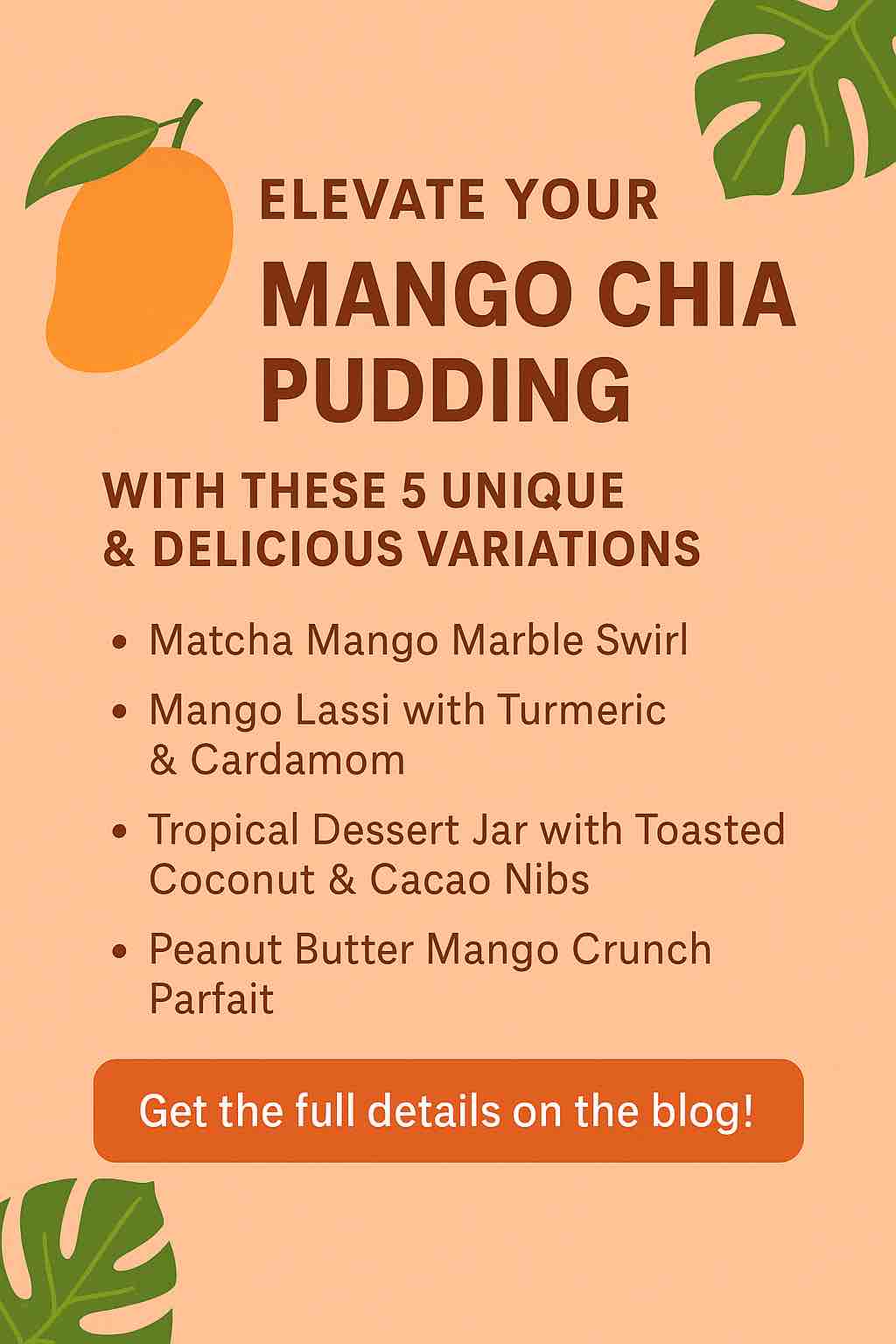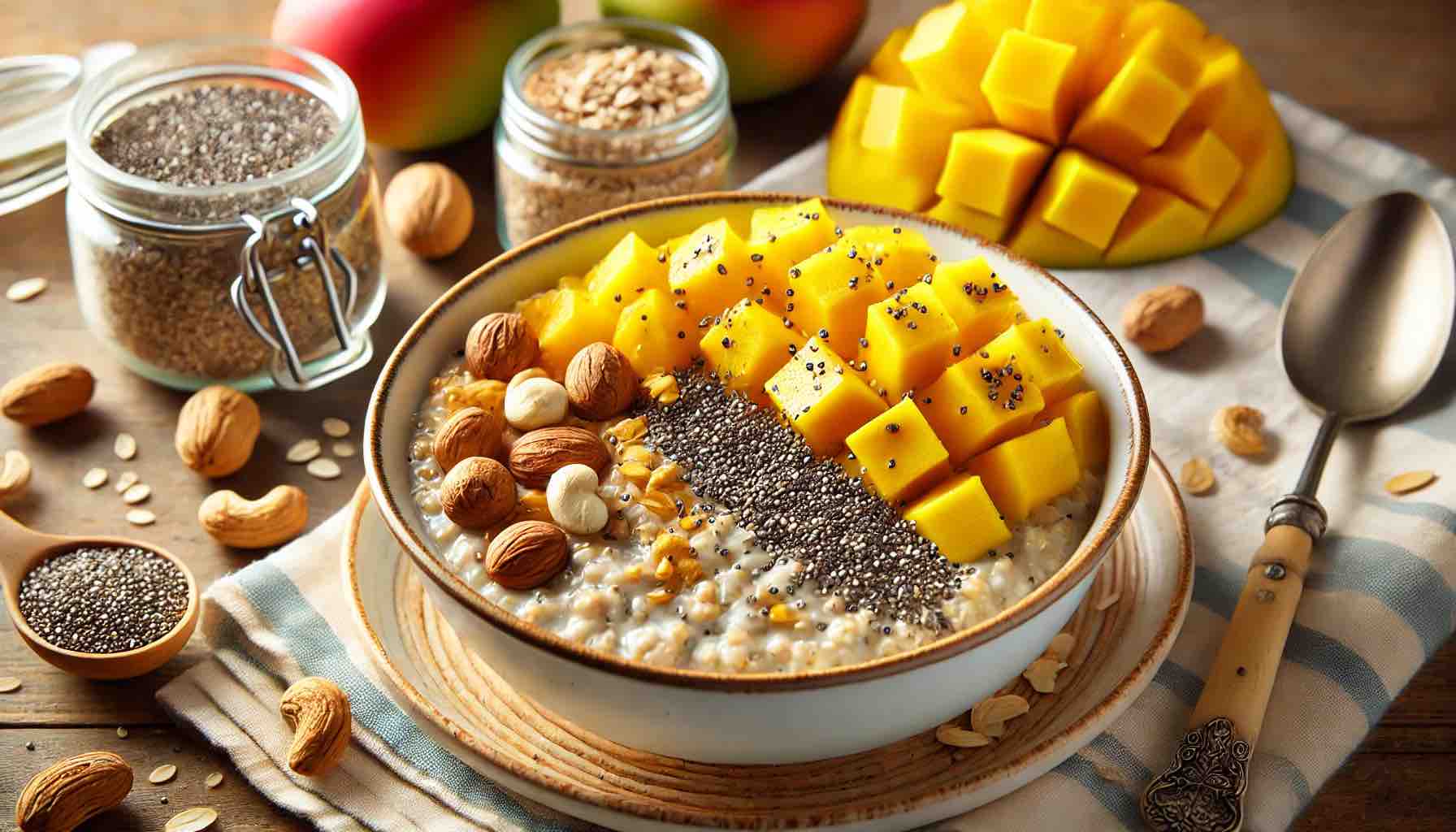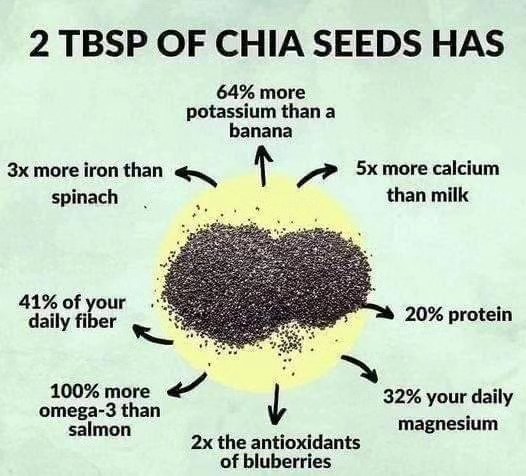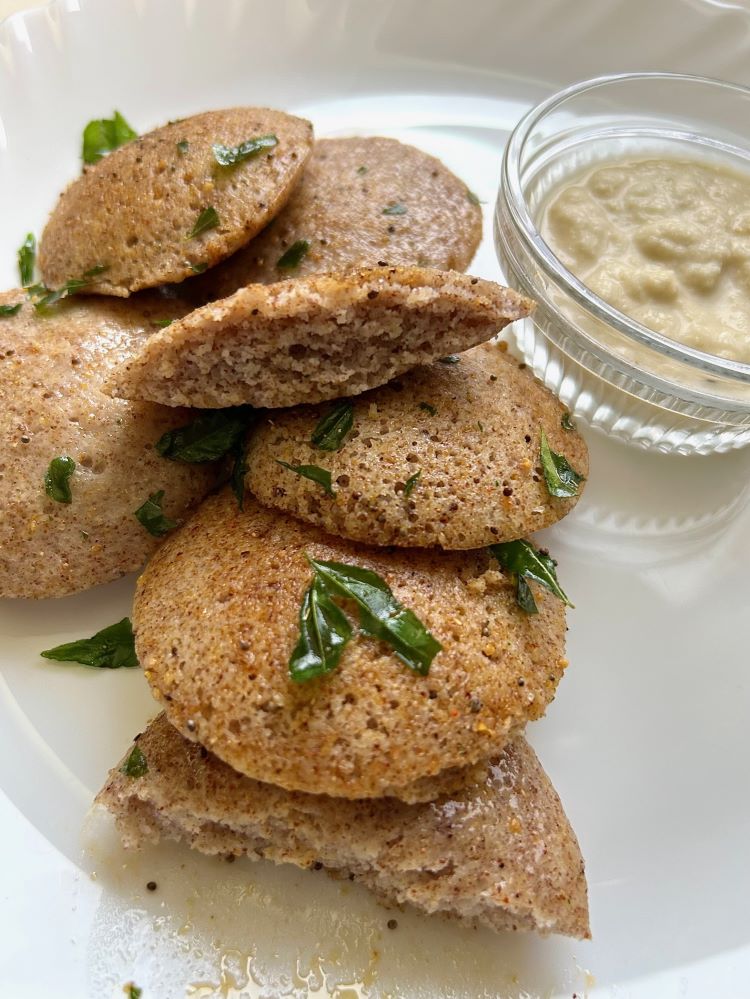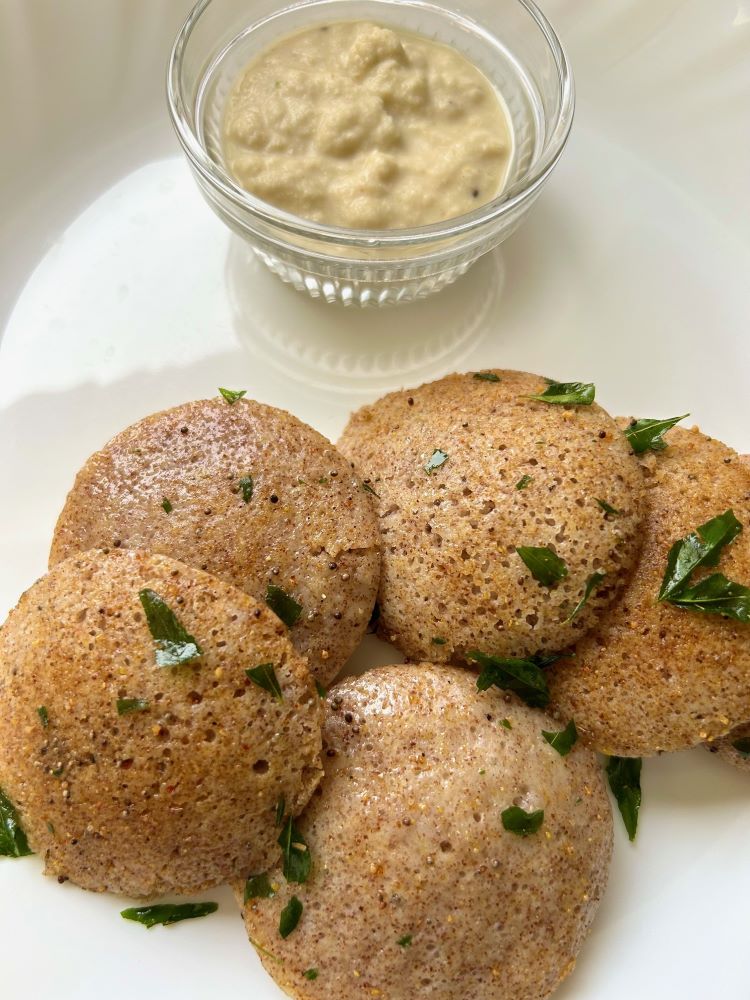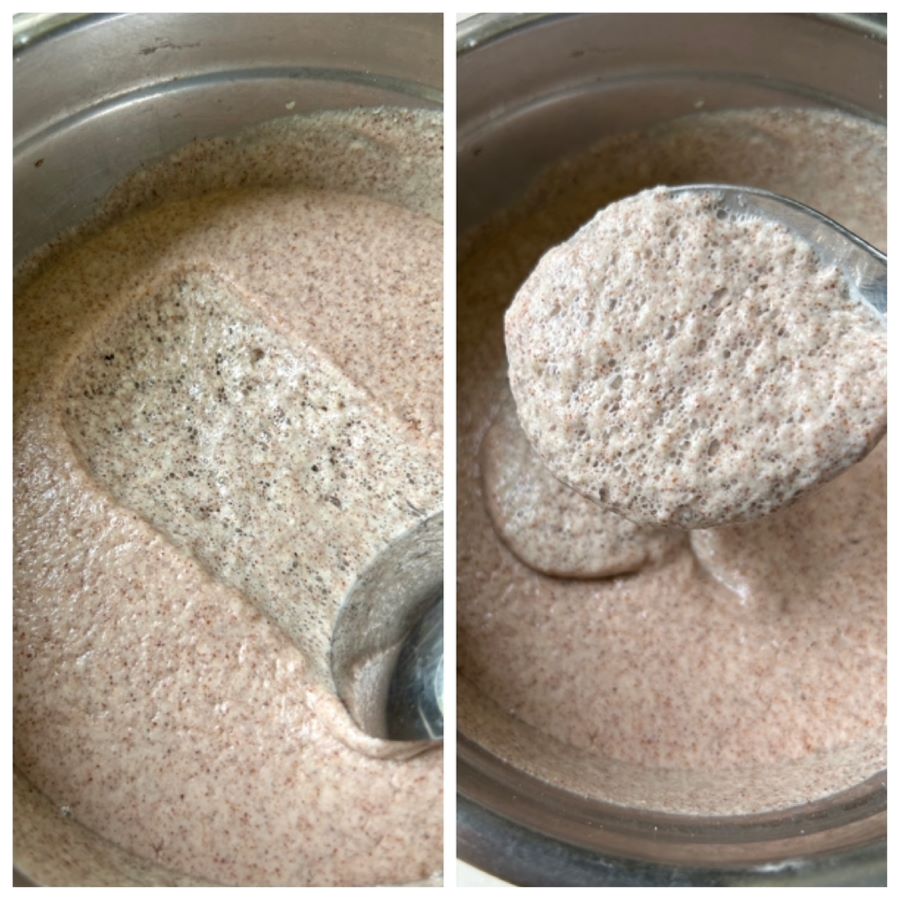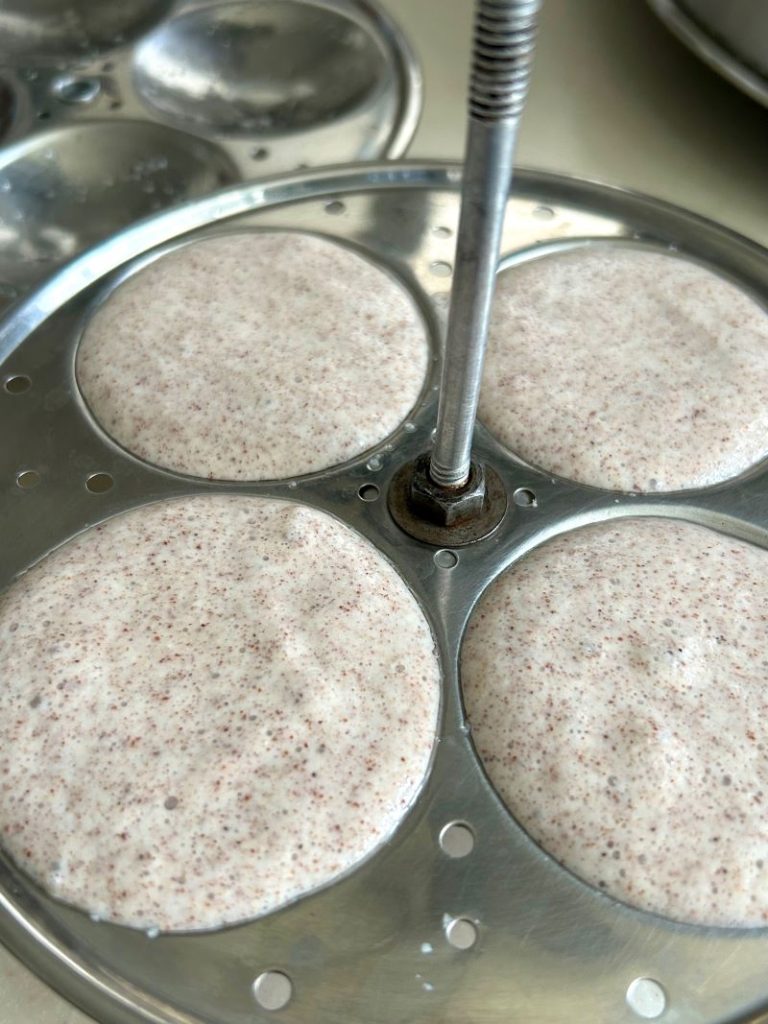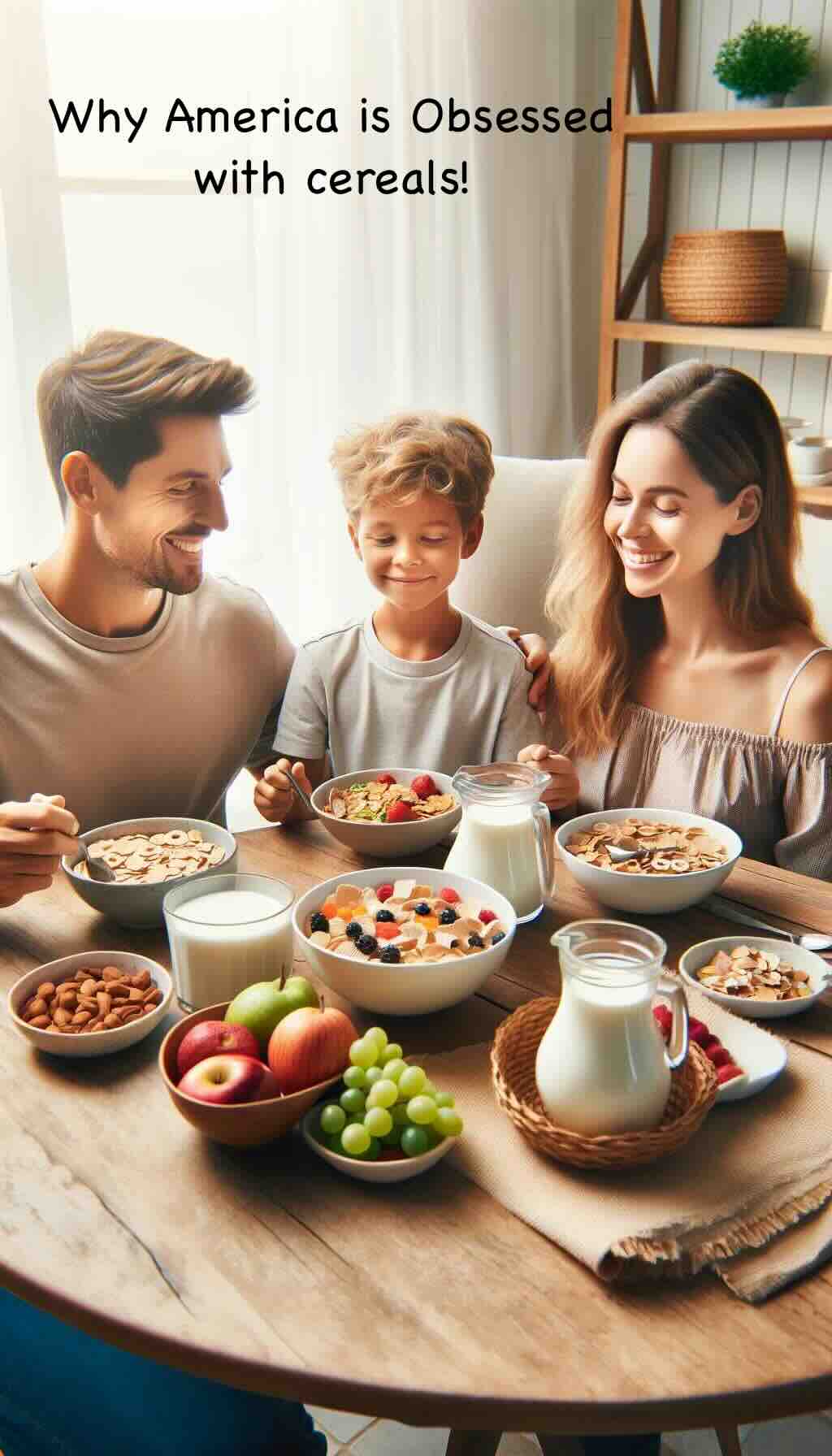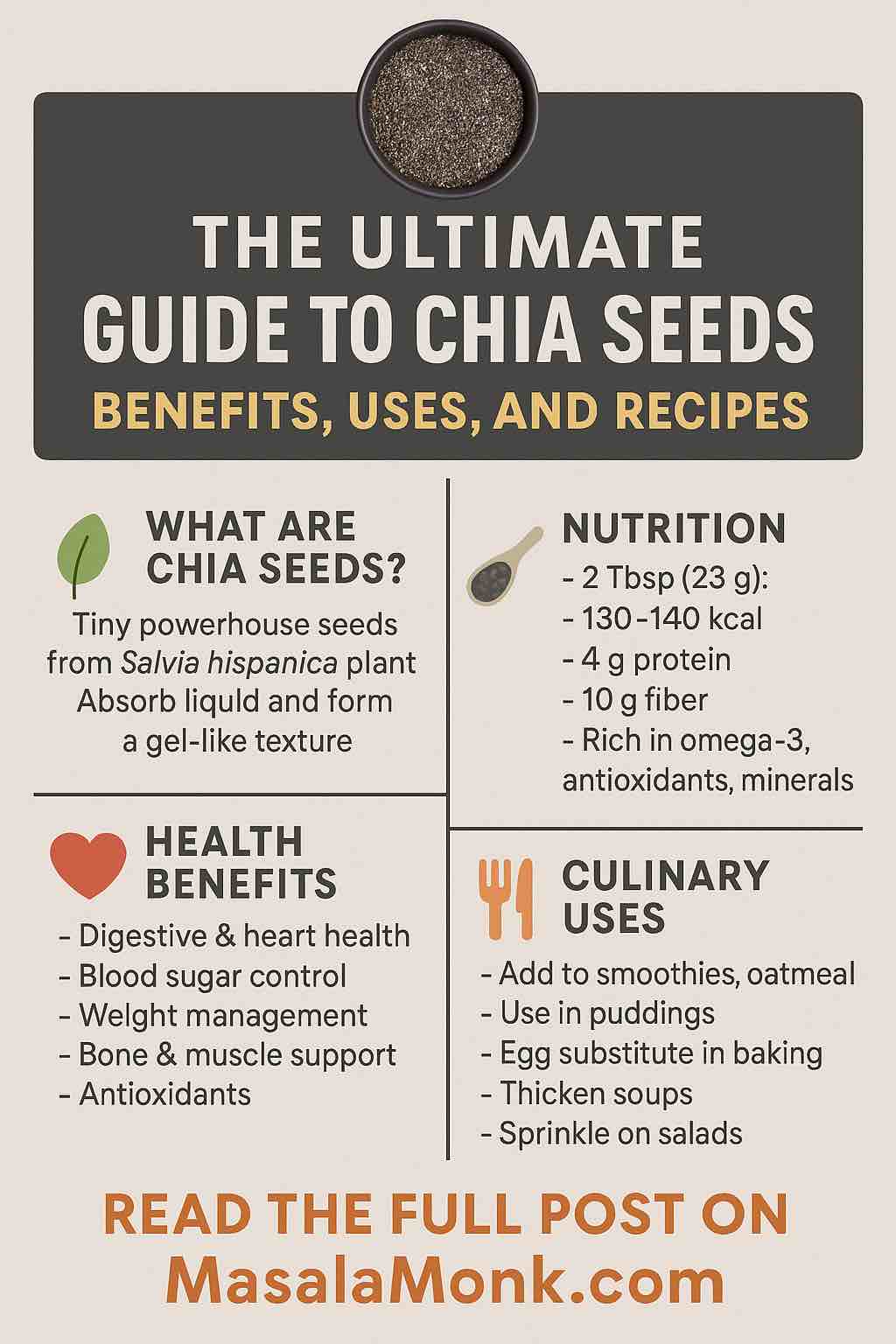
Whether you’re a wellness enthusiast, a curious foodie, or someone simply trying to eat healthier, chia seeds are a tiny superfood worth knowing. This guide explores everything you need to know about chia seeds: their origins, health benefits, practical uses, and easy-to-make recipes that fit into any lifestyle.
🌱 What Are Chia Seeds?
Chia seeds are the edible seeds of Salvia hispanica, a flowering plant native to Mexico and Guatemala. Historically consumed by Aztec and Mayan cultures, chia was prized for its energy-boosting properties. Today, it’s known for being rich in fiber, omega-3 fatty acids, protein, and essential minerals.
🧪 Nutritional Powerhouse
In just two tablespoons (28g), chia seeds offer:
- Fiber: 10-11g
- Protein: 4-5g (with all 9 essential amino acids)
- Fat: 8-9g (mainly ALA omega-3s)
- Calcium: 18% of RDI
- Magnesium: 30% of RDI
- Phosphorus: 27% of RDI
- Antioxidants: Quercetin, chlorogenic acid, and caffeic acid
Chia seeds are naturally gluten-free and suitable for vegan, keto, and paleo diets.
❤️ Health Benefits
1. Supports Heart Health
The high content of omega-3 fatty acids (ALA) helps reduce inflammation, lower blood pressure, and improve cholesterol levels.
2. Improves Digestion
With 40% fiber by weight, chia seeds promote gut health, regular bowel movements, and help prevent constipation.
3. Regulates Blood Sugar
The soluble fiber in chia forms a gel-like consistency that slows digestion, helping to prevent blood sugar spikes.
4. Aids in Weight Management
The gel-like consistency when soaked provides a feeling of fullness, reducing overeating.
5. Boosts Bone Health
Rich in calcium, phosphorus, and magnesium—critical nutrients for maintaining strong bones.
6. Antioxidant Protection
Chia’s antioxidant compounds help combat oxidative stress and may support aging and chronic disease prevention.
⚠️ Potential Side Effects & Safety Tips
- Choking hazard: Dry chia seeds expand in liquid. Always soak before consuming.
- Digestive discomfort: Introduce gradually and drink plenty of fluids.
- Drug interactions: Monitor if on blood pressure or diabetes meds.
- Prostate/Kidney caution: High ALA and mineral levels may need moderation in sensitive individuals.
🍴 Practical Ways to Use Chia Seeds
💧 Hydration & Energy
- Chia Fresca: Mix 1 tbsp chia seeds in a glass of water with lemon juice. Great for pre-workout hydration.
- Fennel Chia Water: Soak chia with crushed fennel seeds overnight; drink in the morning for digestion.
🍽 Breakfasts
- Overnight Oats: Mix oats, milk, chia seeds, and fruit; refrigerate overnight.
- Smoothie Booster: Add a tablespoon of soaked chia to any smoothie.
- Chia Yogurt Bowl: Mix with Greek yogurt, berries, and a drizzle of honey.
🍰 Baking & Cooking
- Egg Substitute: Mix 1 tbsp chia + 3 tbsp water = 1 egg in baking recipes.
- Breads & Muffins: Add a few tablespoons into batter for a nutrition upgrade.
- Thickener: Use in soups or sauces instead of cornstarch.
🥗 Salads & Snacks
- Granola Mix: Include in granola bars or homemade trail mix.
- Salad Topper: Sprinkle raw over salads for crunch.
🍓 Easy & Delicious Recipes
1. Coconut Chia Pudding
Ingredients:
- 1/2 cup chia seeds
- 2 cups coconut milk
- 1 tsp vanilla extract
- 1 tbsp maple syrup
- Fruit, nuts for topping
Instructions: Mix ingredients, refrigerate for 6+ hours. Top with fruits and nuts before serving.
2. Strawberry Banana Chia Smoothie
Ingredients:
- 1 banana
- 1/2 cup strawberries
- 1 tbsp soaked chia seeds
- 1 cup almond milk
- Ice (optional)
Instructions: Blend until smooth and creamy. Serve immediately.
3. Savory Avocado Toast with Chia
Ingredients:
- 2 slices of whole grain bread
- 1 ripe avocado
- Lemon juice, chili flakes, salt
- 1 tsp chia seeds
Instructions: Mash avocado with seasoning, spread on toast, and sprinkle with chia.
4. Indian-Inspired Chia Bowl (Mango Turmeric)
Ingredients:
- 1/2 cup chia seeds
- 1.5 cups coconut milk
- 1/4 tsp turmeric
- 1/2 cup mango puree
- Cardamom, jaggery to taste
Instructions: Soak chia in coconut milk overnight. Mix in turmeric, mango, and sweetener before serving.
✅ Final Tips for Everyday Use
- Stick to 1-2 tablespoons/day.
- Soak for at least 10–15 minutes before consuming.
- Pair with foods rich in vitamin C or calcium to improve mineral absorption.
- Store in a cool, dry place in an airtight container.
🧭 Conclusion
Chia seeds offer an easy, versatile, and nutrient-dense way to enhance your diet. From boosting heart health to supporting digestion, these tiny seeds are a worthy pantry staple. With countless ways to enjoy them—from puddings to smoothies to savory dishes—chia can be effortlessly integrated into any lifestyle.
Ready to give chia a try? Start small, stay hydrated, and get creative in your kitchen!
🔍 Frequently Asked Questions (FAQs)
1. Do chia seeds need to be soaked before eating?
Yes. Soaking chia seeds prevents potential choking and enhances digestibility. When dry, they absorb 10–12x their weight in liquid, which can cause discomfort if eaten without fluid. Soak for at least 10–15 minutes.
2. How much chia should I eat daily?
1 to 2 tablespoons (15–30 grams) per day is generally safe and effective for most people. Start with 1 tablespoon and increase gradually while ensuring good hydration.
3. Can chia seeds help with weight loss?
They may help indirectly. The fiber and gel-forming nature of soaked chia seeds promote satiety, which can reduce calorie intake. However, chia alone won’t cause weight loss—it should be part of a balanced diet and active lifestyle.
4. Are there any side effects of chia seeds?
In excess or without enough water, chia may cause bloating, gas, or constipation. Dry seeds can pose a choking risk. Also, people on blood pressure, blood sugar, or blood thinner medications should consult a doctor due to chia’s bioactive properties.
5. Can I cook chia seeds?
Yes. You can bake them into muffins, breads, and pancakes. Cooking won’t destroy most of their nutrients, but soaking or grinding preserves the omega-3 content better.
6. What’s the difference between black and white chia seeds?
Nutritionally, they are nearly identical. The main difference is cosmetic—white chia may be preferred in lighter-colored dishes like puddings or smoothies for visual appeal.
7. How do chia seeds support heart health?
Chia seeds are rich in ALA, a plant-based omega-3 fatty acid shown to reduce inflammation, lower blood pressure, and improve cholesterol levels—all beneficial for cardiovascular health.
8. Are chia seeds good for people with diabetes?
Yes. The soluble fiber slows carbohydrate absorption, helping to stabilize blood sugar. However, they may enhance the effects of diabetes medications, so monitor levels closely if adjusting your diet.
9. Can children or elderly people eat chia seeds?
Yes, but always ensure they are fully soaked to avoid choking. Start with small amounts and mix into soft foods like yogurt or porridge.
10. How should I store chia seeds?
Keep them in an airtight container in a cool, dark place. Properly stored, they can last up to 2 years. For maximum freshness, refrigerate after opening, especially in humid climates.

